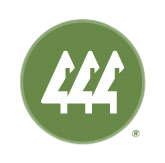Sumner/Puyallup
About Sumner/Puyallup
Puyallup is a city in Pierce County, Washington, United States, located about 10 miles southeast of Tacoma and 35 miles south of Seattle. It had a population of 37,022 at the 2010 Census, with the Washington State Office of Financial Management estimating an increase to 42,361 as of 2019. The city's name comes from the Puyallup Tribe of Native Americans and means "the generous people". Puyallup is also home to the Washington State Fair, the state's largest fair.
The valley in which Puyallup was originally settled forms the town. Its fertile soil is optimal for the acres of daffodils which were grown for distribution worldwide, and are featured in the town's annual spring parade. The Puyallup River meanders between the hills, through the glacial basin, from its namesake glacier on Mt. Rainier, terminating in Puget Sound at the Port of Tacoma. It is cold, silty, and brown, sometimes green. From most perspectives in the town of Puyallup, Mt. Rainier is visible to the southeast.
Downtown Puyallup has several notable landmarks, including Ezra Meeker's mansion, which was built and inhabited by one of the town's founding families, who made their way to Puyallup via the Oregon trail. The downtown shopping district is made up of historic buildings, which date to the town's origin. Pioneer Park is a community focal point, which boasts a public library, a park with a playground, and walking paths. As the focal point of the park, there is a bronze statue honoring Ezra Meeker. A new element is the public stage by the public library. At the public stage local musicians put on free shows for the public. Southeast Puyallup is also where the Pierce County Foothills Trail begins.
source: wikipedia.org
Read More ▾Avg Work Commute
0 minsMedian Age
0Median Area Income
$0Median Sale Price
$0The Commute
Travel Methods
To City CenterSumner/Puyallup Sales Data
Percentage change from latest quarter vs same time period previous year
Data compiled using 2nd quarter 2024 data vs. same period from 2023
Median Sales Price
MEDIAN SALES PRICE

Demographics
- Filter by:
- Population
- Income
- Education
- Market Rents
Population by Age Level. Median Age 39.36. Households: 17,102.
In Thousand of Dollars. (Median Income: $74,767)
Population by Education Level
Fair Market Rents
Sumner/Puyallup Schools & Education
Public & Private Institutions Of Learning
Education is provided by public, private and home schools. State governments set overall educational standards, often mandate standardized tests for K–12 public school systems and supervise, usually through a board of regents, state colleges, and universities. Funding comes from the state, local, and federal government. Private schools are generally free to determine their own curriculum and staffing policies, with voluntary accreditation available through independent regional accreditation authorities, although some state regulation can apply.
Avg School Rating
3.2/5Publically Funded
39Catholic / Religious
1Private / Charter
7Publically Funded
Sumner Special Services
Elementary School
- Preschool - 12th Grade
- Student - Teacher Ratio: Not Reported : 1
- Great School Rating: N/A
- Website
Chief Leschi School
Elementary School
- Preschool - 12th Grade
- Student - Teacher Ratio: 6 : 1
- Great School Rating: N/A
- Website
Maplewood Elementary School
Elementary School
- Preschool - 6th Grade
- Student - Teacher Ratio: 21 : 1
-
Great School Rating:
- Website
Stewart Elementary School
Elementary School
- Preschool - 6th Grade
- Student - Teacher Ratio: 20 : 1
-
Great School Rating:
- Website
Sunrise Elementary School
Elementary School
- Preschool - 6th Grade
- Student - Teacher Ratio: 21 : 1
-
Great School Rating:
- Website
Wildwood Elementary School
Elementary School
- Preschool - 6th Grade
- Student - Teacher Ratio: 21 : 1
-
Great School Rating:
- Website
G W Edgerton Elementary School
Elementary School
- Preschool - 6th Grade
- Student - Teacher Ratio: 21 : 1
-
Great School Rating:
- Website
Pope Elementary School
Elementary School
- Preschool - 6th Grade
- Student - Teacher Ratio: 20 : 1
-
Great School Rating:
- Website
Maple Lawn Elementary School
Elementary School
- 1St Grade - 5th Grade
- Student - Teacher Ratio: 22 : 1
-
Great School Rating:
- Website
Daffodil Valley Elementary School
Elementary School
- 1St Grade - 5th Grade
- Student - Teacher Ratio: 20 : 1
-
Great School Rating:
- Website
Fruitland Elementary School
Elementary School
- Kindergarten - 6th Grade
- Student - Teacher Ratio: 25 : 1
-
Great School Rating:
- Website
Karshner Elementary School
Elementary School
- Kindergarten - 6th Grade
- Student - Teacher Ratio: 20 : 1
-
Great School Rating:
- Website
Meeker Elementary School
Elementary School
- Kindergarten - 6th Grade
- Student - Teacher Ratio: 21 : 1
-
Great School Rating:
- Website
Psd Special Services
Elementary School
- Kindergarten - 12th Grade
- Student - Teacher Ratio: Not Reported : 1
- Great School Rating: N/A
- Website
Northwood Elementary School
Elementary School
- Kindergarten - 6th Grade
- Student - Teacher Ratio: 21 : 1
-
Great School Rating:
- Website
Shaw Road Elementary School
Elementary School
- Kindergarten - 6th Grade
- Student - Teacher Ratio: 19 : 1
-
Great School Rating:
- Website
Mt View Elementary School
Elementary School
- Kindergarten - 5th Grade
- Student - Teacher Ratio: 20 : 1
-
Great School Rating:
- Website
Hedden Elementary School
Elementary School
- 2Nd Grade - 5th Grade
- Student - Teacher Ratio: 19 : 1
-
Great School Rating:
- Website
Spinning Elementary School
Elementary School
- Kindergarten - 6th Grade
- Student - Teacher Ratio: 17 : 1
-
Great School Rating:
- Website
Firgrove Elementary School
Elementary School
- Kindergarten - 6th Grade
- Student - Teacher Ratio: 19 : 1
-
Great School Rating:
- Website
Woodland Elementary School
Elementary School
- Kindergarten - 6th Grade
- Student - Teacher Ratio: 21 : 1
-
Great School Rating:
- Website
Puyallup Digital Learning
Elementary School
- Kindergarten - 12th Grade
- Student - Teacher Ratio: Not Reported : 1
-
Great School Rating:
- Website
Puyallup Parent Partnership Program
Elementary School
- Kindergarten - 8th Grade
- Student - Teacher Ratio: Not Reported : 1
-
Great School Rating:
- Website
Edward Zeiger Elementary School
Elementary School
- Kindergarten - 6th Grade
- Student - Teacher Ratio: 22 : 1
-
Great School Rating:
- Website
Ridgecrest Elementary School
Elementary School
- Kindergarten - 6th Grade
- Student - Teacher Ratio: 19 : 1
-
Great School Rating:
- Website
Warren Hunt Elementary School
Elementary School
- Kindergarten - 6th Grade
- Student - Teacher Ratio: 22 : 1
-
Great School Rating:
- Website
Sumner Middle School
Middle School
- 6th Grade - 8th Grade
- Student - Teacher Ratio: 19 : 1
-
Great School Rating:
- Website
Aylen Jr High School
Middle School
- 7th Grade - 9th Grade
- Student - Teacher Ratio: 21 : 1
-
Great School Rating:
- Website
Edgemont Jr High School
Middle School
- 6th Grade - 9th Grade
- Student - Teacher Ratio: 19 : 1
-
Great School Rating:
- Website
Kalles Junior High School
Middle School
- 7th Grade - 9th Grade
- Student - Teacher Ratio: 24 : 1
-
Great School Rating:
- Website
Ballou Jr High School
Middle School
- 7th Grade - 9th Grade
- Student - Teacher Ratio: 20 : 1
-
Great School Rating:
- Website
Ferrucci Jr High School
Middle School
- 7th Grade - 9th Grade
- Student - Teacher Ratio: 20 : 1
-
Great School Rating:
- Website
Glacier View Junior High School
Middle School
- 7th Grade - 9th Grade
- Student - Teacher Ratio: 23 : 1
-
Great School Rating:
- Website
Sumner Senior High School
High School
- 9th Grade - 12th Grade
- Student - Teacher Ratio: 22 : 1
-
Great School Rating:
- Website
Elhi Hill High School Program
High School
- 9th Grade - 12th Grade
- Student - Teacher Ratio: 11 : 1
- Great School Rating: N/A
- Website
Puyallup High School
High School
- 10th Grade - 12th Grade
- Student - Teacher Ratio: 24 : 1
-
Great School Rating:
- Website
E B Walker High School
High School
- 10th Grade - 12th Grade
- Student - Teacher Ratio: 17 : 1
- Great School Rating: N/A
- Website
Gov John Rogers High School
High School
- 10th Grade - 12th Grade
- Student - Teacher Ratio: 23 : 1
-
Great School Rating:
- Website
Emerald Ridge High School
High School
- 10th Grade - 12th Grade
- Student - Teacher Ratio: Not Reported : 1
-
Great School Rating:
- Website
Catholic / Religious
All Saints Elementary School
Elementary School
- Preschool - 8th Grade
- Student - Teacher Ratio: 17 : 1
- Great School Rating: N/A
- Website
Private / Charter
Stepping Stones Montessori
Pre School
- Preschool - Preschool
- Student - Teacher Ratio: Not Reported : 1
- Great School Rating: N/A
- Website
Cascade Christian - Puyallup Elementary
Elementary School
- Kindergarten - 6th Grade
- Student - Teacher Ratio: 16 : 1
- Great School Rating: N/A
Cascade Christian School Mcalder Elementary
Elementary School
- Preschool - 6th Grade
- Student - Teacher Ratio: Not Reported : 1
- Great School Rating: N/A
Northwest Christian School
Elementary School
- Preschool - 8th Grade
- Student - Teacher Ratio: 18 : 1
- Great School Rating: N/A
- Website
Salvation Christian Academy
Elementary School
- Preschool - 10th Grade
- Student - Teacher Ratio: 12 : 1
- Great School Rating: N/A
- Website
Cascade Christian -Junior High/High School
Middle School
- 7th Grade - 12th Grade
- Student - Teacher Ratio: 15 : 1
- Great School Rating: N/A
- Website
Kindercare Learning Center # 1479
Elementary School
- Preschool - 6th Grade
- Student - Teacher Ratio: Not Reported : 1
- Great School Rating: N/A
- Website
Where To Drink, Dine, Shop, Relax & Recline









































































































































































































































































 By submitting information, I am providing my express written consent to be contacted by representatives of this website through a live agent, artificial or prerecorded voice, and automated SMS text at my residential or cellular number, dialed manually or by autodialer, by email, and mail.
By submitting information, I am providing my express written consent to be contacted by representatives of this website through a live agent, artificial or prerecorded voice, and automated SMS text at my residential or cellular number, dialed manually or by autodialer, by email, and mail.

